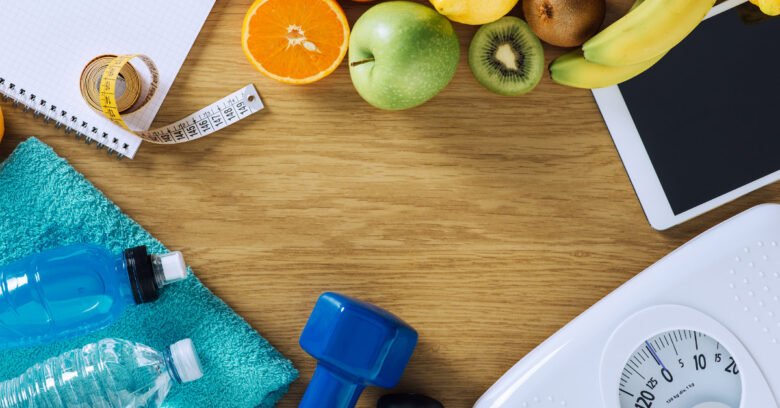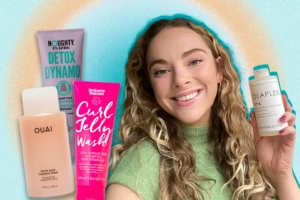Glowing skin and healthy hair don’t have to come with a high price tag. While the beauty industry markets expensive serums, treatments, and salon visits, the truth is that many effective skincare and haircare practices are both simple and affordable. With the right knowledge and consistency, you can build a reliable self-care routine without straining your budget.
This article shares practical, low-cost tips to help you take care of your skin and hair effectively—from using multi-use natural products to developing smarter habits that lead to long-term benefits.
Why Budget Beauty Matters
Spending more doesn’t always mean better results. Many products are overpriced due to branding and packaging, yet offer the same benefits as their budget-friendly counterparts. Additionally, consistent care, rather than occasional splurges, is what truly maintains skin and hair health.
Investing in a few core habits and versatile ingredients can help you maintain your beauty routine without sacrificing quality. Budget-friendly self-care is not only cost-effective but also sustainable and empowering.
Affordable Skincare Tips That Work
1. Stick to the Basics
You don’t need a 10-step routine. A cleanser, moisturizer, and sunscreen are the foundation of healthy skin. Choose gentle, non-comedogenic formulas from reputable drugstore brands.
Budget Tip: Look for fragrance-free products with minimal ingredients—often cheaper and gentler.
2. Use Multipurpose Natural Products
Natural ingredients like aloe vera, coconut oil, and honey can be used in several ways—cleansing, moisturizing, and masking.
Budget Tip: Buy in bulk or pure form and store properly to extend shelf life.
3. DIY Face Masks
Create nourishing masks at home using ingredients like yogurt, oats, turmeric, or mashed banana.
Budget Tip: Mix 1 tbsp yogurt with ½ tsp turmeric for a brightening mask that costs less than a dollar.
4. Hydrate from Within
Drinking enough water is one of the most cost-effective skincare practices. Dehydrated skin appears dull and flaky regardless of your skincare products.
Budget Tip: Keep a reusable water bottle with you as a daily reminder.
5. Exfoliate Smartly
Instead of harsh scrubs, use simple homemade exfoliators like sugar and olive oil or diluted apple cider vinegar.
Budget Tip: Exfoliate just once or twice a week to avoid overuse and save on product.
Inexpensive Haircare Tips for Strong, Healthy Hair
1. Wash Less Frequently
Shampooing daily dries out your scalp and wastes product. Washing 2–3 times per week helps your hair retain natural oils.
Budget Tip: Use dry shampoo or cornstarch to freshen up between washes.
2. Deep Condition at Home
Skip the salon by using homemade masks with eggs, olive oil, or plain yogurt for deep hydration.
Budget Tip: Mix 1 egg with 1 tbsp olive oil, apply to damp hair for 15 minutes, then rinse.
3. Air-Dry and Minimize Heat
Excess heat styling damages hair and adds electricity to your energy bill. Air-drying protects your strands and your wallet.
Budget Tip: Use soft microfiber towels to reduce drying time and frizz naturally.
4. Trim at Home
Learn basic trimming techniques for split ends to stretch out visits to the salon.
Budget Tip: Invest in a small pair of hair scissors for home touch-ups.
5. Protect Hair While You Sleep
Switch to a satin or silk pillowcase to reduce breakage and frizz.
Budget Tip: Satin alternatives are inexpensive and available online or in local stores.
Skincare vs. Haircare: Affordable Care Chart
| Category | Skincare Tips | Haircare Tips |
|---|---|---|
| Daily Routine | Gentle cleanser, moisturizer, SPF | Shampoo 2–3x weekly, condition ends only |
| Weekly Care | DIY exfoliation and mask | Oil massage, deep conditioning |
| Natural Products | Aloe vera, honey, turmeric | Coconut oil, eggs, yogurt |
| DIY Treatments | Oat + honey face mask | Egg + olive oil hair mask |
| Lifestyle Habits | Hydration, sleep, sun protection | Less heat, satin pillowcase, scalp massage |
Daily Habits That Cost Nothing (But Deliver Value)
- Wash your pillowcases regularly to avoid acne and scalp buildup.
- Tie hair loosely at night to prevent tugging and breakage.
- Avoid touching your face frequently, which spreads bacteria and oil.
- Eat balanced meals with plenty of fruits, vegetables, and healthy fats for glowing skin and strong hair.
FAQs: Affordable Skin and Hair Care
Can budget skincare really be as effective as luxury brands?
Yes. Many affordable products contain the same active ingredients. The key is choosing the right product for your skin type and staying consistent.
How often should I use DIY masks?
Once or twice per week is sufficient. Overuse can lead to irritation, even with natural ingredients.
Are drugstore shampoos damaging to hair?
Not necessarily. Avoid ones with sulfates or alcohols. Many drugstore brands now offer sulfate-free, nourishing options.
Is coconut oil good for both skin and hair?
Yes, but patch-test first. It may clog pores for acne-prone skin but works well as a hair conditioner or scalp oil.
What’s the cheapest way to reduce frizz naturally?
Limit heat styling, use a satin pillowcase, and apply a few drops of coconut or argan oil to damp hair.
Conclusion: Beauty on a Budget Is Absolutely Possible
Effective skin and hair maintenance doesn’t require expensive routines or branded treatments. By focusing on simple, proven practices, you can care for your body without overspending. In fact, many of the most reliable ingredients—like aloe vera, coconut oil, and yogurt—come straight from nature and are readily available in your kitchen or local store.
True beauty comes from consistency, not cost. Stick to a minimalist routine, stay hydrated, eat well, and treat yourself with care. Your skin and hair will thank you—with radiance, strength, and health you didn’t have to splurge for.
References
- American Academy of Dermatology – Skin Care on a Budget
https://www.aad.org/public/everyday-care/skin-care-secrets/skin-care-on-a-budget - Mayo Clinic – Hair Care Tips
https://www.mayoclinic.org/healthy-lifestyle/adult-health/in-depth/hair-care/art-20045857 - NIH – Home Remedies for Skin and Hair
https://www.ncbi.nlm.nih.gov/pmc/articles/PMC4387693




